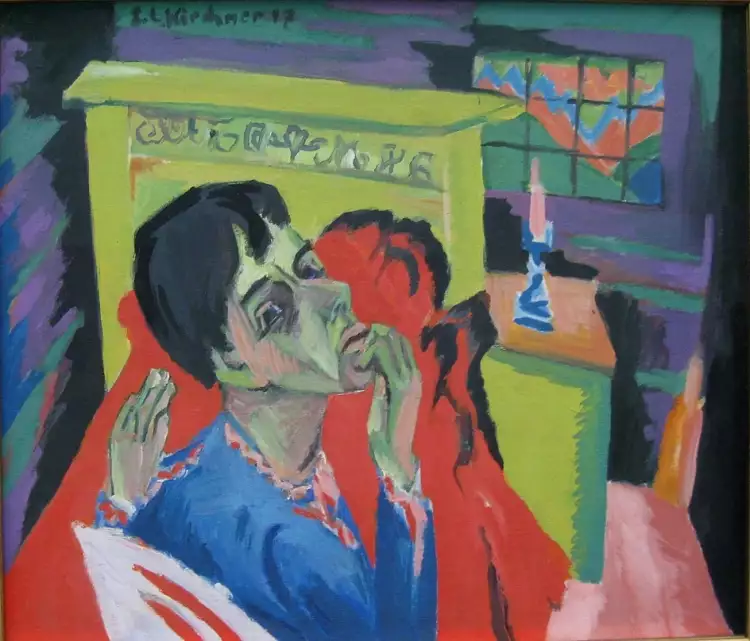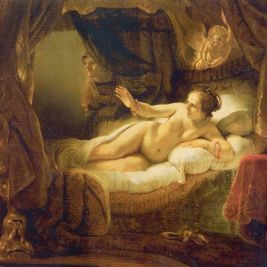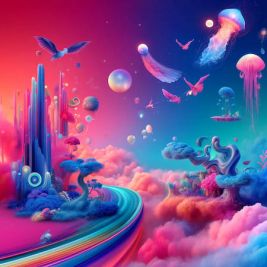
The most famous expressionist artists
Expressionism emerged at the end of the 19th and the beginning of the 20th century and became a revelation in European art during the modernist era. Like many other movements in painting, it arose as a protest, in this case against the increasing separation of humanity from nature. Expressionists were irritated by the prevalence of bourgeois kitsch, false gloss, and vulgar bravado in contemporary society. Inspired by Impressionism, they portrayed not reality itself but rather the human reaction to that reality.
 The most famous expressionist artists. Expressionist exhibition
The most famous expressionist artists. Expressionist exhibition
 The most famous expressionist artists. Edward Munch. The Scream, 1893
The most famous expressionist artists. Edward Munch. The Scream, 1893
This is why the paintings of expressionists are characterized by vibrant brushstrokes, expressive details, and an exaggerated expression of emotions, often bordering on emotional exhibitionism, in defiance of societal values and decorum. Interestingly, the term expressionism (from the Latin "expressio") was reportedly coined by the Czech art historian A. Matějček in 1910. The purpose of the name was to distinguish it from impressionism and highlight the difference between them—the dreamlike Impressionism living in the world of appearances and the suffering Expressionism dwelling in an unseemly reality. Here are the brightest and most famous representatives of the genre.
Max Beckmann
One of the most renowned names in the world of painting is the German artist, portraitist, and expressionist Max Beckmann. Interestingly, it was he who brought about the revival of the medieval triptych.
 The most famous expressionist artists. Max Beckmann. Departure, 1932
The most famous expressionist artists. Max Beckmann. Departure, 1932
Beckmann became most famous as a portraitist, and his realist-style portraits adorn famous galleries and private collections. The avant-garde masterpieces of the artist captivate with their highly expressive emotionality.
 The most famous expressionist artists. Max Beckmann. Hölle der Vögel, 1937-1938
The most famous expressionist artists. Max Beckmann. Hölle der Vögel, 1937-1938
Canvases in dark tones with sparingly depicted faces, grotesque poses and expressions, contrasts, heavy, sometimes rough brushwork—these techniques precisely convey the emotion of suffering and create an atmosphere of anxiety akin to the anticipation of an impending apocalypse.
Edvard Munch
Norwegian painter Edvard Munch is a direct refutation of the thesis of Scandinavian composure and emotional restraint. His agonizing "The Scream" is the quintessence of grief, striking in its power and depth.
 The most famous expressionist artists. Edward Munch. The Sick Child, 1885-1886
The most famous expressionist artists. Edward Munch. The Sick Child, 1885-1886
The works of Fyodor Dostoevsky (Russian: Федор Достоевский) and the works of impressionists had a profound influence on the artist's work. One of Munch's most famous paintings, "The Sick Child," was painted after he visited an Impressionist exhibition in Paris, where he became closely acquainted with the works of Paul Gauguin and Vincent van Gogh.
It cannot be said that the artist's life was filled with serious tragedies, but the ones that did occur left a deep mark on his soul and his art. For example, after a foolish prank by Munch's lover, he spent six months in a psychiatric clinic, after which his painting style underwent a sharp transformation. The soft and flowing lines, subdued colors completely transformed into their opposites.
Ernst Ludwig Kirchner
Ernst Ludwig Kirchner is a figure in the history as one of the founders of German Expressionism, alongside Beckmann. The painter's works are just as dramatic and expressive as Vincent van Gogh's masterpieces but have more ecological qualities. By the way, van Gogh's art made an indelible impression on Ernst Ludwig Kirchner, so much so that he even decided to borrow some of his themes. One of Kirchner's paintings is "Female Profile and Sunflowers," where the sunflowers strongly resemble those of van Gogh.
 The most famous expressionist artists. Ernst Ludwig Kirchner. A woman's profile and sunflowers, 1906
The most famous expressionist artists. Ernst Ludwig Kirchner. A woman's profile and sunflowers, 1906
Kirchner had a great interest in the art of primitive oceanic and African tribes, and this interest in primitive art can be seen in many of the master's works. Like the art of other expressionists, Kirchner's paintings were strongly influenced by the events of that difficult period (World War I, Hitler's crusade against "degenerate art"), as well as personal dramas.
 The most famous expressionist artists. Ernst Ludwig Kirchner. Self-portrait as a
Sick Person, 1918
The most famous expressionist artists. Ernst Ludwig Kirchner. Self-portrait as a
Sick Person, 1918
Ultimately, the artist, a person of delicate nervous constitution, tormented by pain and mental anguish, took his own life in 1938.
Egon Schiele
In the works of Austrian expressionist Egon Schiele, one can clearly see signs of the influence of the creativity of Vincent van Gogh, Edvard Munch, and Gustav Klimt.
 The most famous expressionist artists. Egon Schiele. Krumau
The most famous expressionist artists. Egon Schiele. Krumau
He got to know and became friends with the latter when he was still a student at the Vienna Academy of Fine Arts. Unfortunately, the painter lived a short life, only 28 years.
 The most famous expressionist artists. Egon Schiele. Death and the Maiden, 1915
The most famous expressionist artists. Egon Schiele. Death and the Maiden, 1915
The "Spanish flu" epidemic that raged in Europe in 1918 claimed his life. The artist's legacy, which includes three hundred paintings and several thousand drawings, serves as a source of pride for some of the world's most renowned museums today.
Wassily Kandinsky
It was he who came up with the idea of creating the famous German expressionist group "Der Blaue Reiter" - as famous as the renowned "Die Brücke" group.
 The most famous expressionist artists. Wassily Kandinsky. Houses in Murnau, 1909
The most famous expressionist artists. Wassily Kandinsky. Houses in Murnau, 1909
Wassily Kandinsky (Russian: Василий Кандинский), who started as an expressionist artist, gradually moved away from the genre and embraced the idea of the primacy of form over content - abstract expressionism.
 The most famous expressionist artists. Wassily Kandinsky. A few circles
The most famous expressionist artists. Wassily Kandinsky. A few circles
Born in Russia and trained in painting in Munich, he enthusiastically participated in the development of art in the Soviet Union upon his return. However, in 1921, the artist emigrated to Germany, and later to Paris.
 The most famous expressionist artists. Wassily Kandinsky. Landscape sketch
The most famous expressionist artists. Wassily Kandinsky. Landscape sketch
 Five centuries of antique and modern firearms
Five centuries of antique and modern firearms  Baroque is an exquisite pearl of European culture: essence, developmental history, style features
Baroque is an exquisite pearl of European culture: essence, developmental history, style features  Pastoral is an elegant and carefree genre of art from the Baroque and Rococo periods
Pastoral is an elegant and carefree genre of art from the Baroque and Rococo periods  Vanitas is a genre of art that prompts the viewer to contemplate the inevitability of death
Vanitas is a genre of art that prompts the viewer to contemplate the inevitability of death  Impressionism in painting, or The Catchers of the Beautiful Moment
Impressionism in painting, or The Catchers of the Beautiful Moment  Japandi style in interior design - a minimalist fusion of East and West
Japandi style in interior design - a minimalist fusion of East and West  Meissen Porcelain: The History of the Manufactory
Meissen Porcelain: The History of the Manufactory  Documentary Photography: Photo story about important events and everyday life
Documentary Photography: Photo story about important events and everyday life  Surrealism and Abstract Gradients: Design Trends Shaping 2024
Surrealism and Abstract Gradients: Design Trends Shaping 2024  Photography is an art accessible to everyone
Photography is an art accessible to everyone